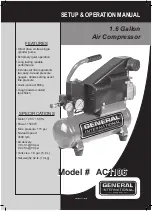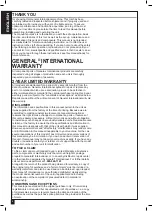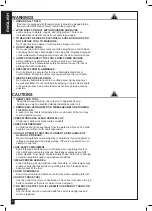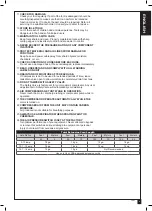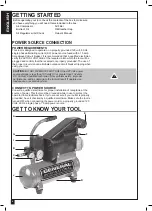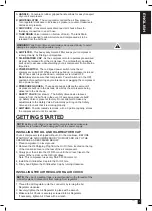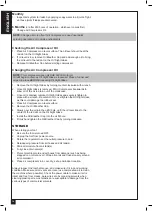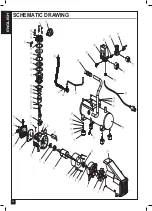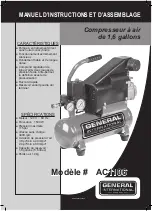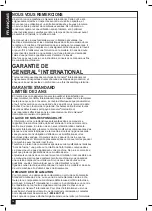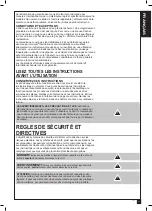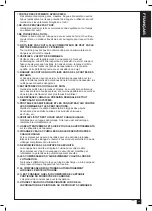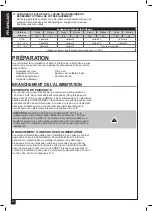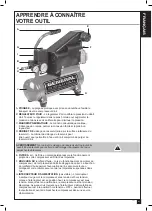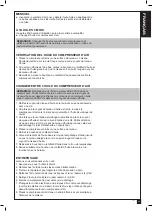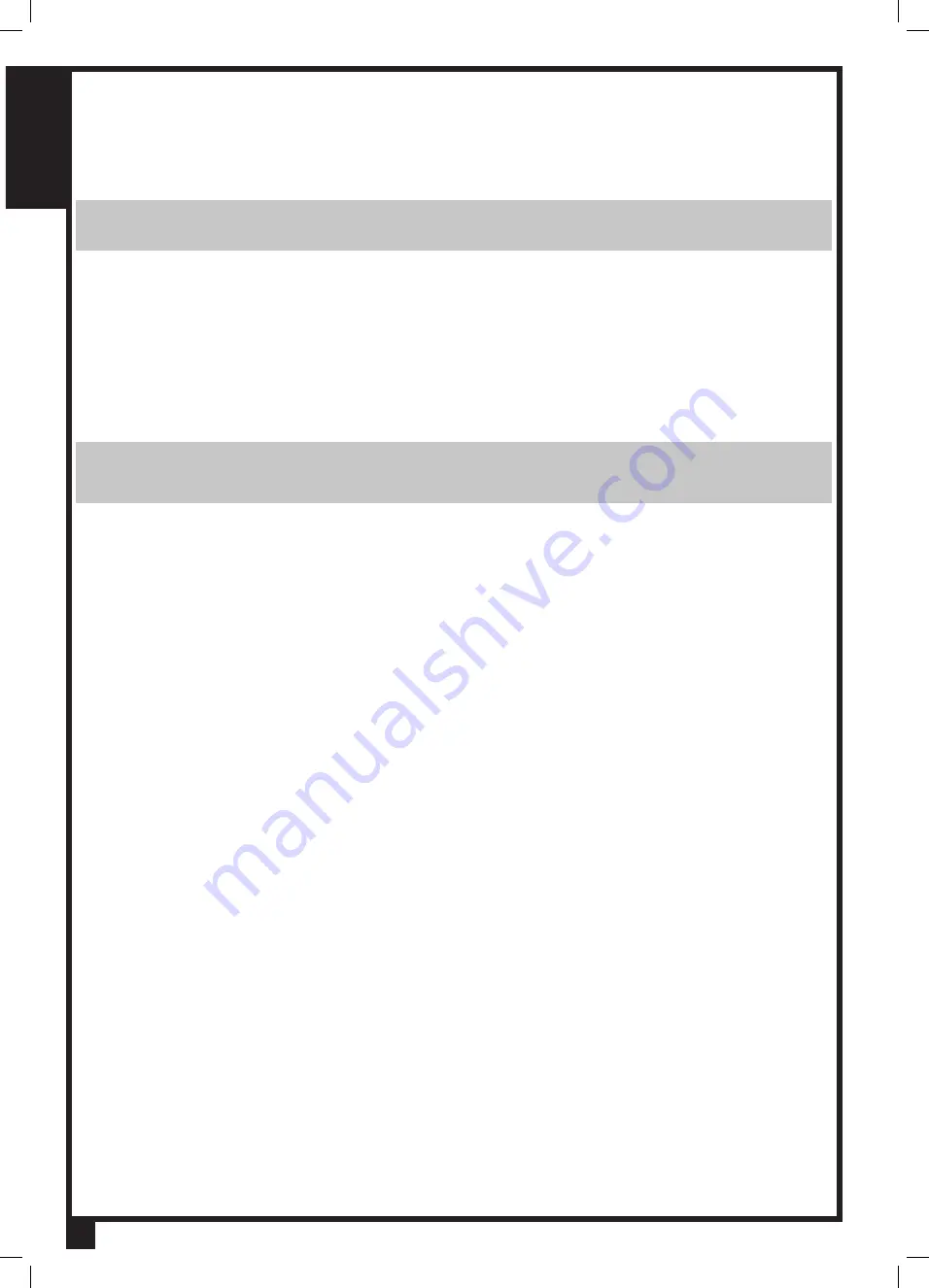
ENGLISH
10
Monthly
1. Inspect air system for leaks by applying soapy water to all joints. Tight-
en these joints if leaks are discovered.
6 Months
(or after 250 hours of operation - whichever comes first)
1. Change Air Compressor Oil.
NOTE:
Change oil more often if Air Compressor is used near paint
spraying operations or in dusty environments.
Checking the Air Compressor Oil
1. Place Air Compressor on level surface. The oil level should be at the
red dot on the Oil Sight Glass.
2. If oil level is low, remove Oil Breather Cap and add enough oil to bring
the oil level to the red dot on the Oil Sight Glass.
3. Replace Oil Breather Cap before starting compressor.
Changing the Air Compressor Oil
NOTE:
This compressor uses only SAE 5W-30 motor oil.
Oil will begin to drain as Oil Sight Glass is loosened. Place a funnel and
oil pan in place BEFORE loosening Oil Sight Glass.
1. Remove the Oil Sight Glass by turning counter clockwise with wrench.
2. Once Oil Sight Glass is removed, tilt Air Compressor backwards to
allow all of the oil to drain out of the crankcase.
3. Once oil is drained, replace Oil Sight Glass and securely tighten in
place with a wrench. Be careful not to overtighten the Oil Sight Glass,
as this could damage the rubber seal.
4. Place Air Compressor on level surface.
5. Remove the Oil Breather Cap.
6. Slowly pour the oil into the oil fill hole, until the oil level rises to the
center of the red dot on the Oil Sight Glass.
7. Install the Oil Breather Cap into the oil fill hole.
8. Firmly hand tighten the Oil Breather Cap by turning clockwise.
STORAGE
When storing your tool:
1. Be sure the tool is turned OFF.
2. Unplug the tool from power source.
3. Rotate the regulator to set the outlet pressure to zero.
4. Release air pressure from all hoses and air tank(s).
5. Drain all moisture from air tank(s).
6. Fully close drain valve(s).
7. Protect electrical cord and air hoses from damage (such as being
stepped on or driven over). Wrap all cords and hoses loosely around
air compressor.
8. Place air compressor in a cool, dry, safe, and indoor location.
Always inspect the tool before use, and make sure it is in good working
condition. Make sure all air vents are clear, (use compressed air to clean
the machine where possible). Check the power cable to make sure it is
intact and free from cracks, bare wires etc. Avoid using solvents when
cleaning plastic parts, most plastics are susceptible to damage from the
various types of commercial solvents.
Summary of Contents for AC1106
Page 12: ...ENGLISH 12 SCHEMATIC DRAWING...
Page 13: ......
Page 14: ......
Page 28: ...FRAN AIS 28 SCH MA...

